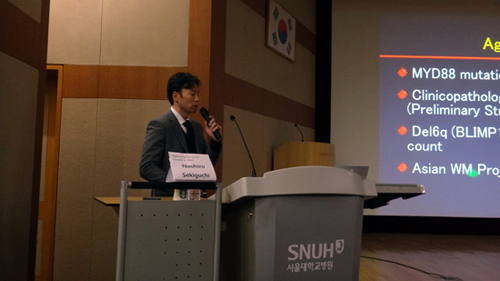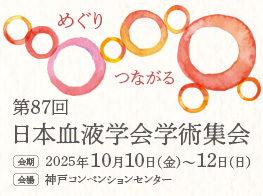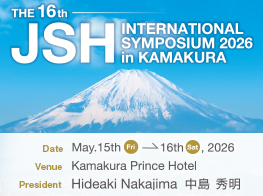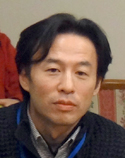
Naohiro Sekiguchi
Division of Hematology, National Hospital Organization Disaster Medical Center, Tokyo, Japan
Research Project
Clinicopathological Study of Waldenstrom Macroglobulinemia in Far East Asia
Host Institute
1) Internal Medicine, Seoul National University Hospital
2) Cancer Research Institute, Seoul National University
GENERAL REPORT
1.Seoul and its Culture
Seoul is the beautiful and historical capital of Korea with a population of approximately 20 million people. The city resembles a mixture of Tokyo and Kyoto, and has many scenic places worth visiting, such as palaces and gates. The food available in Seoul is also unique. Koreans love their own culture, food, and language, and are a passionate, resilient and proud people.
2.Seoul National University Hospital, Seoul National University
Seoul National University Hospital is located next to Changdeokgung, a world cultural heritage. Its main hospital is surrounded by many institutes including the Cancer hospital, Children’s hospital, Dental hospital, Seoul National University, Cancer Research Institute, Biomedical Institute, and Animal Center. My host mentor, Prof. Sung-Soo Yoon is the current chairperson of the Korean Multiple Myeloma Working Party (KMMWP), and approximately 150 newly diagnosed myeloma patients visit the hospital every year. Many well-known scientists have visited Seoul National University or the city, and have partaken in special lectures. I joined some of these lectures including that by Aaron Ciechanover, who is a pioneer in ubiquitin research and a Nobel prize winner, Jan Cools, who is the Editor-in-Chief of Hematologica, Prof. Angela Dispenzieri from the Mayo Clinic, and Chng Wee Joo from the National University of Singapore. I regularly attended genetic meetings (Figure 1) and student meetings held in the Cancer Research Institute. Many projects discussed in the genetic meetings were very interesting, and debates on the material presented were riveting. Many promising findings were presented, all of which I believe will contribute to global evidence.
3.Waldenstrom Macroglobulinemia in Far East Asia
The purpose of my research was to examine Waldenstrom Macroglobulinemia (WM) in Far East Asia. WM is rare disease that has been categorized as a lymphoma. Because of its rarity, little is currently known about WM in Far East Asia. The findings of a preliminary study on WM by the Disaster Medical Center revealed that the clinical, pathological, and cytogenetic features of WM in Asia appeared differ from those in the US and European countries (Sekiguchi N, et al. Journal of Cancer Therapy. 2012; 3: 1037-1044.). I had the opportunity to present the findings of my preliminary study and outline my scientific proposal at the 3rd KMMWP Workshop (Figure 2), after which I conducted a multicenter, retrospective study on WM in Korea and Japan. I hope to present the results of this study at the 8th International Workshop on Waldenstrom Macroglobulinemia in London in 2014, and also publish my findings in an appropriate journal in the near future.
4.Key Factors of the Fellowship Exchange Program (My Opinion for the Next Awardee)
As I was the 1st awardee of this program in Japan, I was always at a loss about what I should do for this exchange program. Based on my experiences, I suggest the following;
1)Because the period of this fellowship exchange program is only 3 months, the scientific proposal should be concise, specific, and feasible.
2)Spoken English skill is essential for communication, discussions, negotiations, persuasive speaking, and presentations, as is written English skill for writing protocols and IRB documents in English.
3)The probability of successfully completing projects will be higher if a preliminary study of the scientific proposal has already been published in English.
4)Korean culture and food is unique and attractive. Therefore, ‘‘Do as the Koreans do!’’
5. Acknowledgments
I would like to thank Prof. Sung-Soo Yoon in the Department of Internal Medicine and Prof. Dong Soon Lee in the Department of Laboratory Medicine of Seoul National University Hospital. I would like to also thank Assistant Prof. Hyun Jung Lee in the Department of Hematology and Medical Oncology in Dongguk University Ilsan Hospital, Dr. Kwang Sung Ahn, President of PDxen Biosystems, and all the staff at the Cancer Research Institute of Seoul National University, including Chansu Lee. Finally, I would like to express my gratitude to the Japanese Society of Hematology and Korean Society of Hematology for giving me this precious opportunity.
Figure Legends
Figure 1. Members of the Genetic Meeting held in the Cancer Research Institute
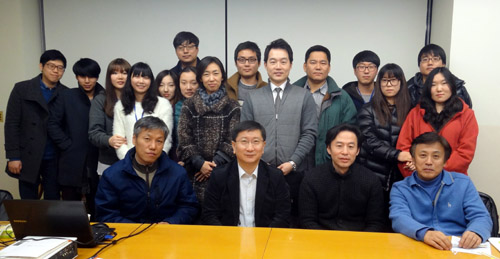
Figure 2. Presentation at the 3rd KMMWP Workshop
